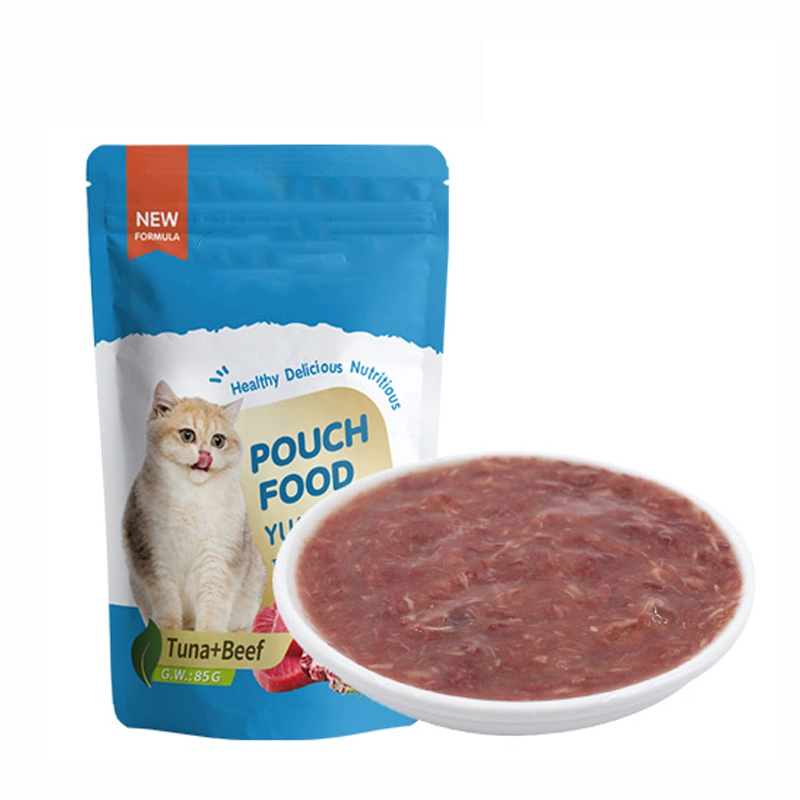How to Choose the Best Treats for Your Cat cat treats
Your kitty deserves to have plenty of treats in her life. Cat treats are more than just a tasty snack: they can be used as training tools, props for interactive games, and with the right ingredients, cats treats can also be supplemental for your pet’s health.
OEM ODM Wholesale Wet Cat Food Pet treats Customized cat treats
We know cats can be opinionated and picky, so finding the best cat treat for your furry friend may take some trial and error. Whether your cat prefers crunchy or soft textures or fish or poultry-flavored treats, it’s important to know how to choose the best cat treats for your well-deserving kitty.
Cat Treat Considerations
Every cat has different preferences and needs. Your fellow cat owner may recommend their favorite cat treats, but you still need to take your cat’s specific health concerns or dietary restrictions into consideration (not to mention her taste and texture preferences).
You may also want to have different treats for different purposes: training treats, treats to go with medicine, and treats that are simply a tasty snack for a well-deserving feline, for example. You can also choose treats with specific health benefits, such as dental treats or treats for hairball control.
Even the healthiest treats need to be given in the appropriate portion sizes. As a general rule of thumb, cat treats should make up no more than 10% of your cat’s overall diet.
Our kitties can be irresistible, and we want to show our love as often as possible. However, treats aren’t the only way to show affection. If you suspect that you’re giving your kitty too many treats, try replacing some of those excess cat treats with cuddles and quality time.

What to Look For in Cat Treats
Whether you’re browsing the pet aisle at the grocery store or scouring the internet for the best cat treats, you should be looking for the following:
- Recognizable ingredients. Ideally, cat treats should consist of meats, grains, vegetables, and other natural ingredients. Added fillers, dyes, and preservatives may make the treats look good to you, but it doesn’t make them good for your cat’s health.
- Meat. Cats are carnivores, so the best cat treats are the ones with meat as the main ingredient. Look for high-quality protein sources, such as salmon or chicken, listed as the first ingredient.
- Supplements. If you’re looking for treats to help with specific health conditions, look for treats with added supplements such as omega-3s, glucosamine and chondroitin, probiotics, or even an added protein boost.
- Treats specifically made for cats. Sharing may be caring, but not when it comes to dog treats. Dogs and cats have different dietary needs, so f you have multiple pets, keep their food and treats separate.
You’ll also want to find cat treats that come from a reputable country and company. If in doubt, check for a seal from the Association of American Feed Control Officials.
What to Avoid in Cat Treats
Most cat treats are either semi-moist and soft, or crunchy and hard. You can also purchase freeze-dried cat treats. However, it’s best to avoid raw treats, as they may contain bacteria that could lead to illness. Basically, it’s always better to be safe than sorry when it comes to your pet’s health.
You’ll also want to avoid jerky treats, as these often contain added seasonings, preservatives, and food colorings.
Other ingredients to avoid include fats, carbs, sugar, salt, artificial coloring, preservatives, and any unrecognizable ingredients. Of course, if your cat has any food allergies, make sure the allergen is not included in the cat treats.

Alternative Treat Options
There are also a variety of human foods that are safe to share with your cat. While these foods—mostly meats—should be given in small portions and are best reserved for special occasions, they can be a nice treat in moderation. Plus, some of them are considered superfoods!
Alternative cat treat options include:
- Canned or cooked tuna
- Canned or cooked salmon
- Cooked chicken or turkey (with no added salt or oil)
- Cooked lean beef cuts
- Cooked eggs
- Canned sardines
- Small cubes of cheese (one at a time)
- Milk—but only if you know that your cat can digest lactose.
You can also try your hand at homemade cat treats. That way, you’ll know exactly what ingredients they contain.
Of course, we can’t forget about catnip! This natural herb is non-addictive and non-toxic, and cats are generally pretty good about knowing when they’ve had enough. In addition to being a fun treat, catnip is also great for training your kitty.








